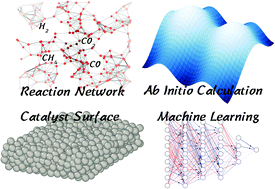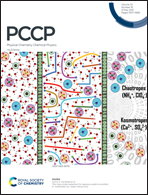Perspective on computational reaction prediction using machine learning methods in heterogeneous catalysis
Abstract
Heterogeneous catalysis plays a significant role in the modern chemical industry. Towards the rational design of novel catalysts, understanding reactions over surfaces is the most essential aspect. Typical industrial catalytic processes such as syngas conversion and methane utilisation can generate a large reaction network comprising thousands of intermediates and reaction pairs. This complexity not only arises from the permutation of transformations between species but also from the extra reaction channels offered by distinct surface sites. Despite the success in investigating surface reactions at the atomic scale, the huge computational expense of ab initio methods hinders the exploration of such complicated reaction networks. With the proliferation of catalysis studies, machine learning as an emerging tool can take advantage of the accumulated reaction data to emulate the output of ab initio methods towards swift reaction prediction. Here, we briefly summarise the conventional workflow of reaction prediction, including reaction network generation, ab initio thermodynamics and microkinetic modelling. An overview of the frequently used regression models in machine learning is presented. As a promising alternative to full ab initio calculations, machine learning interatomic potentials are highlighted. Furthermore, we survey applications assisted by these methods for accelerating reaction prediction, exploring reaction networks, and computational catalyst design. Finally, we envisage future directions in computationally investigating reactions and implementing machine learning algorithms in heterogeneous catalysis.

- This article is part of the themed collections: 2021 PCCP HOT Articles, PCCP Perspectives and Emerging AI Approaches in Physical Chemistry


 Please wait while we load your content...
Please wait while we load your content...